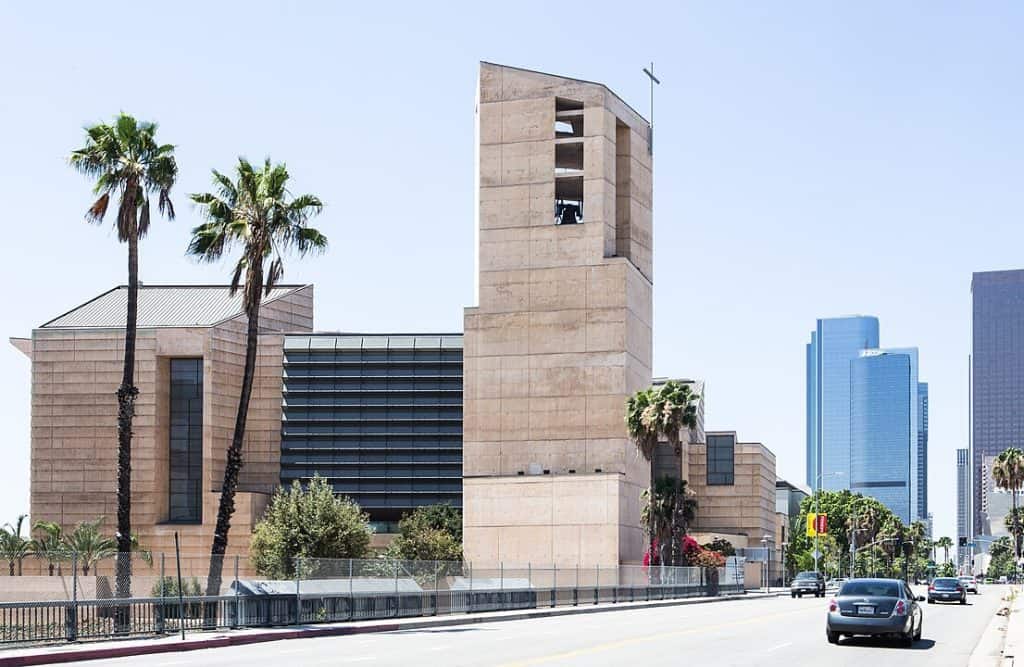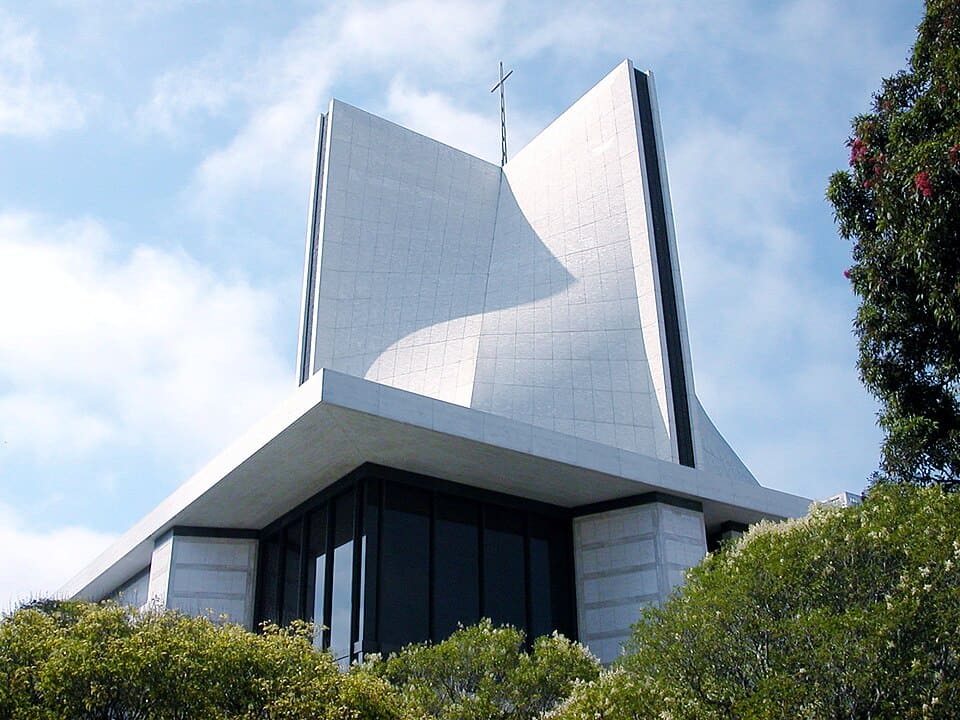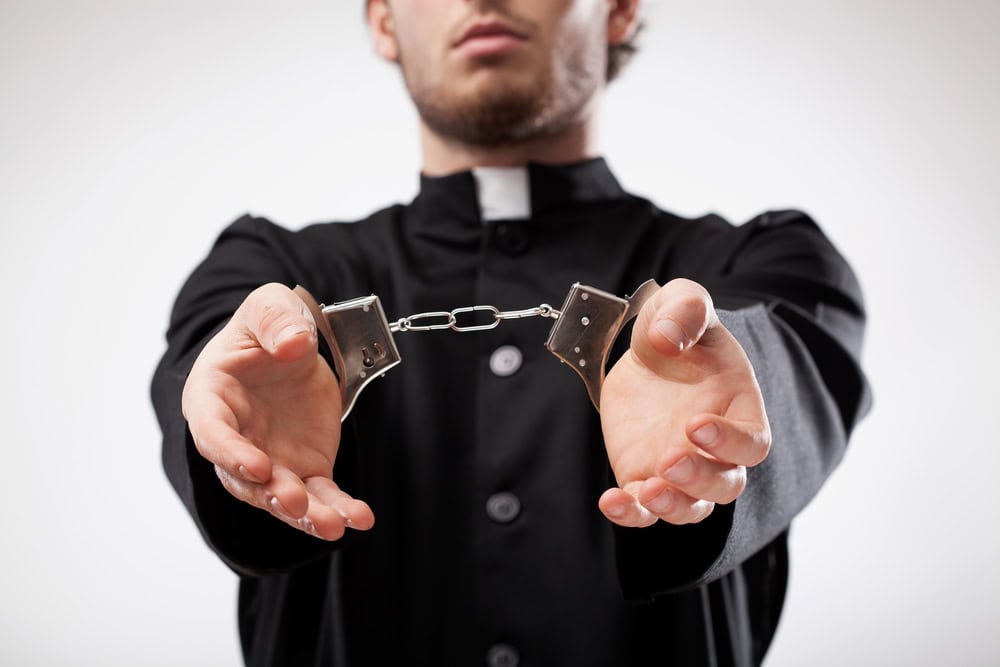If you’re ready to take the next step, fill out the confidential form below. We may help connect you with an attorney who specializes in clergy sexual abuse cases.

Few institutions are as closely linked to widespread sexual abuse allegations as the Catholic Church. For decades, heartbreaking stories have come to light detailing how priests, bishops, and other clergy members exploited their spiritual authority to abuse children and vulnerable adults. These abuses were not isolated incidents; rather, they represented a systemic pattern of misconduct, secrecy, and betrayal.
In the United States alone, more than 11,000 credible allegations of sexual abuse have been reported against Catholic clergy since 1950, according to the U.S. Conference of Catholic Bishops. A 2019 report from the Associated Press estimates that the Catholic Church has paid survivors over $3 billion in settlements nationwide. These figures are staggering, but they only scratch the surface of the real human impact. Thousands of survivors remain unheard, and countless others have carried the silent burden of trauma for decades, believing they missed their chance to seek justice.
Even if the abuse happened decades ago, or if the morally-reprehensible, responsible priest has since passed away or the diocese involved has declared bankruptcy, recent legislative changes have reopened doors previously closed by outdated statutes of limitations. Across many states, “lookback windows” have been enacted, allowing survivors to finally step forward, share their stories, and hold accountable those who enabled abuse.
These legislative reforms, driven by courageous survivors and advocates, have redefined the legal landscape. They recognize the profound psychological effects of sexual abuse and how trauma often prevents survivors from speaking out until years or even decades later. Now, survivors have renewed opportunities to file claims, seek accountability, and access compensation to aid in their healing journey.
Learn Your Legal Rights, When You Are Ready
At SurvivorsRights.com, we understand the profound courage it takes to revisit these painful memories. We partner with compassionate, highly experienced attorneys who specialize specifically in Catholic Church sexual abuse cases. Our goal is to ensure that every survivor feels heard, respected, and empowered throughout the legal process.
If you or someone you love has endured sexual abuse by clergy or Church-affiliated individuals, you are not alone, and you have rights. We’re here to help you understand your legal options, explore avenues for justice, and reclaim your power from those who once silenced you.
Yes. Survivors absolutely have the right to pursue legal action against the Catholic Church for sexual abuse, regardless of how long ago it happened. Historically, many believed that powerful institutions like the Catholic Church were untouchable, protected by their immense resources and social influence. Today, survivors have increasingly proven otherwise, successfully holding dioceses and religious orders accountable in courtrooms across the United States. (See the list of successful lawsuits and settlements below.)
When survivors file lawsuits against the Church, they’re not simply seeking financial compensation; they’re also fighting to expose the truth, end the culture of silence, and prevent further harm to others. Legal claims often target dioceses, archdioceses, religious orders, or specific Church-run institutions responsible for failing to stop or actively covering up abuse. In some cases, higher-level Church leaders, such as bishops and archbishops who knowingly concealed misconduct, may also be named in lawsuits.
Crucially, survivors do not need to involve the Vatican directly to achieve justice. Dioceses and religious orders operate as independent legal entities. This means that survivors can file suits directly against these local organizations in civil court. Recent legislative actions, including “lookback windows,” have significantly improved survivors’ ability to file claims by temporarily suspending statutes of limitations.
Successful legal cases have repeatedly demonstrated that dioceses:
Each legal victory helps survivors reclaim their voice and dignity and sends a powerful message that abuse and complicity will no longer be tolerated.
At SurvivorsRights.com, we connect survivors with empathetic attorneys who specialize in holding institutions like the Catholic Church accountable. When you’re ready, we’re here to guide you through the process with compassion, clarity, and respect.
If you’re ready to take the next step, fill out the confidential form below. We may help connect you with an attorney who specializes in clergy sexual abuse cases.

Despite decades of operating as though it was untouchable, the Catholic Church is absolutely not immune from legal responsibility. Courts across the U.S. have consistently affirmed that religious institutions like the Catholic Church must be held accountable if their negligence or intentional concealment contributed to abuse.
Typically, survivors file lawsuits against the diocese or archdiocese where the abuse occurred. These dioceses can often be held legally responsible for:
Survivors of Catholic Church sexual abuse can consider suing a range of individuals and organizations, depending on the unique facts of their case. These parties commonly include:
In some cases, survivors also have the right to file claims against third parties whose negligence contributed to ongoing abuse, including:
So, which specific entity or entities should you file a lawsuit against?
It depends heavily on your individual experience. For instance, where the abuse occurred, who knew about it, and how it was handled or concealed. The details of every survivor’s story are unique, and determining the right legal path forward often requires careful consideration.
The best step you can take is to speak confidentially with an empathetic attorney who has experience in clergy abuse cases. Our compassionate legal partners can help clarify who should be held responsible, outline your legal options clearly, and support you each step of the way toward justice and healing.
When survivors take legal action against the Catholic Church, they typically pursue civil claims, which seek financial compensation and institutional accountability rather than criminal punishment. Civil claims can take various forms depending on the circumstances, who was involved, and how the Church responded to or concealed the abuse. The most common civil claims brought against Catholic dioceses and related entities include:
In addition to these civil claims, criminal charges may also be filed. However, criminal complaints are handled separately by law enforcement authorities and the criminal justice system. Survivors themselves cannot file criminal charges directly but can report abuse to authorities to initiate criminal investigations.
If you’re unsure about what types of claims may apply to your situation, or how best to pursue accountability, speaking confidentially with an experienced attorney can provide clarity. Our intake team may help connect you with an attorney who specializes in helping survivors understand their rights and choose the most effective legal pathway toward justice and healing.
In recent years, several lawsuits have exposed the Catholic Church’s systemic mishandling of sexual abuse allegations. (For the purposes of this article, the geographic focus will be the United States; though the scandal is global.) These cases have not only provided survivors with compensation but have also forced the Church to confront its failures and implement reforms.
What do these cases have in common?
They reveal that legal action can achieve more than financial compensation. Filing a claim can also force meaningful institutional changes. Most importantly, these cases prove that survivors can walk away with a semblance of a sense of justice and validation. If you or someone you know has been affected by clergy abuse, it’s important to understand that legal options may still be available, regardless of when the abuse occurred.

If the diocese where you were abused has filed for bankruptcy, you might be wondering if it’s too late to file a lawsuit or seek justice. The answer is no. In fact, you may still have time to file a legal claim. In fact, bankruptcy is often a direct result of so many survivors courageously coming forward.
When a Catholic diocese files for Chapter 11 bankruptcy, it doesn’t mean they’re “out of money” or that survivors have missed their chance. It means the diocese is reorganizing its finances under court supervision to deal with a large number of claims—most of which are from survivors of sexual abuse.
This legal process creates what’s known as a bankruptcy claims window, during which survivors can submit official abuse claims for potential compensation. These claims are reviewed and, if approved, paid out of a settlement fund that the diocese is legally required to establish as part of its reorganization.
Here’s what survivors need to know:
If the diocese involved in your abuse has declared bankruptcy, that doesn’t mean your chance for justice is gone. In many cases, it’s the very reason a path forward now exists.
For example, in April 2025, a federal judge ruled that two sexual abuse lawsuits against the Archdiocese of San Francisco may proceed to trial, despite the archdiocese’s bankruptcy filing in 2023. The plaintiffs allege they were abused by a now-deceased priest, Joseph Pritchard, in the 1970s. The ruling is a significant moment for survivors whose cases have been on hold amid bankruptcy proceedings involving over 500 similar lawsuits.
Not sure if your diocese has filed for bankruptcy, or whether you’re eligible to file a claim? SurvivorsRights.com may help connect you with a trusted attorney who can review your situation confidentially and let you know your options before time runs out.

In response to the overwhelming number of sexual abuse claims, several prominent Catholic archdioceses in the United States have filed for bankruptcy protection. This legal maneuver is often employed to manage the financial implications of settlements and to equitably address the claims of survivors. Here are some significant examples:
The number of dioceses that have filed for bankruptcy restructuring, ostensibly because of the sheer number of child sex abuse claims facing them, is astounding. In the U.S. there are 194 Catholic dioceses. As of early 2025, 40 dioceses have declared bankruptcy. Think about it: 20% or 1 out of every 5 dioceses have filed for bankruptcy protection. (If you want the latest updates on this, check back for updates on this page for survivors of Catholic clergy sexual abuse, or at bishop-accountability.org/.)
It’s important to note that while bankruptcy can provide a structured framework for dioceses to address multiple claims, it also has significant implications for survivors seeking justice. Understanding the nuances of filing a claim against a bankrupt diocese is crucial, and seeking legal counsel can help navigate this complex process.
If you’re thinking about coming forward, you’re not alone. You’re not expected to know how to wrap your head around the legal process on your own; it’s overwhelming and that’s what legal professionals for. This step-by-step guide walks you through what it typically looks like to file a sexual abuse claim against the Catholic Church. It’s not just about suing an institution so that you may receive a settlement. Arguably, more importantly, it’s about reclaiming your power, your story, and your right to justice and for playing a role in effectuating change.
Your first step is simply reaching out. At SurvivorsRights.com, our intake team listens without judgment. We’ll ask a few questions to understand your situation and determine whether it may qualify for legal action. If so, we may connect you with an attorney experienced in clergy abuse cases.
Once connected, the attorney will carefully review the facts of your experience. You’ll discuss when and where the abuse occurred, who was involved, and what impact it had on your life. Don’t worry if you don’t remember exact dates or details. Trauma affects memory, and experienced attorneys understand this.
Depending on where the abuse occurred and current state laws (including lookback windows or extended statutes of limitations), your attorney will determine if you can file a civil claim or bankruptcy-related claim—and explain your options clearly.
If you move forward, the attorney will handle the paperwork and file your claim. This may be in civil court or, if the diocese has declared bankruptcy, through a bankruptcy court process. In either case, your identity can often be protected if you choose to remain anonymous.
This step may involve collecting documents, speaking with witnesses (if available), and reviewing Church records or personnel files. You don’t need to “prove” anything alone—your legal team will do the heavy lifting.
Many Church abuse cases are resolved through settlements, especially when multiple survivors come forward. But if necessary, your case can move to trial. Either way, your attorney will advocate for your best outcome and keep you informed throughout.
If your case is successful, you may receive compensation for emotional distress, therapy costs, lost income, or other harm suffered. More importantly, your story contributes to a larger movement for truth, accountability, and change.
You are not just a case number. You’re a survivor whose voice matters. If you’re ready to learn more, or even if you’re just starting to think about it, we’re here to help you explore your options in a way that respects your pace and your privacy.
Yes. Catholic priests and anyone else affiliated with the Church can be criminally prosecuted for sexual abuse. Civil lawsuits and criminal charges are two different legal paths, and while they sometimes happen at the same time, they serve different purposes.
A civil claim (like the ones discussed in earlier sections) is filed by the survivor. (More accurately, it’s usually the survivor’s attorney who does the actual filing. There’s no need to feel overwhelmed by the thought of having to file a complex legal matter on your own.) Civil claims help survivors receive financial compensation and hold the Church accountable. A criminal case, on the other hand, is initiated by the government, usually through a district attorney’s office, and focuses on punishing the offender for breaking the law. This can result in jail time, probation, registration as a sex offender, or other penalties.
It usually begins when:
In some states, recent changes to the law have eliminated or extended the criminal statute of limitations for child sexual abuse. That means even if the abuse happened years ago, you might still have the right to press criminal charges.
You can still report the crime. Law enforcement might not be able to bring charges if the perpetrator is deceased, but your report still matters. It could:
That’s a deeply personal decision. Some survivors find it empowering, while others may feel retraumatized by the process or fear not being believed. There is no right or wrong answer here, only what feels right for you. If you’re unsure, speaking with an attorney can help you understand your options without pressure.
Criminal accountability can be part of your justice story, but it doesn’t have to be. Whether you decide to report to law enforcement or pursue a civil claim, you deserve to be heard, believed, and supported every step of the way.

According to the John Jay Report (PDF), which examined allegations of sexual abuse by Catholic clergy in the United States from 1950 to 2002, approximately 4,392 clergy were accused of sexual abuse. Of these, 252 were convicted, and about 100 received prison sentences. Here are a handful of predator priests that have thankfully been held accountable for their crimes by the justice system:
Criminal accountability is possible, even years after the abuse occurred! Survivors who choose to report to law enforcement can play a crucial role in bringing perpetrators to justice and preventing future abuse.
If the priest who abused you has died, you may wonder whether you still have any legal options. The answer is yes. Even if the predator priest is no longer living, survivors can still pursue justice, especially through civil claims against the diocese or religious order that employed or protected the abuser.
Why does this matter? Because abuse almost never happens in a vacuum. In many cases, church officials knew—or should have known—about the abuser’s behavior and failed to intervene. Lawsuits against the Church aren’t just about the individual priest; they’re also about the institution that allowed the abuse to continue unchecked.
Filing a lawsuit after a priest’s death can feel emotionally complicated. Survivors often struggle with grief, unresolved anger, or questions about closure. But you are not without options, and you are not without support. Pursuing a claim can help shift the burden of secrecy and silence back onto the institution that allowed the abuse to happen.
If you’re considering whether to come forward, SurvivorsRights.com may help connect you with legal professionals who understand these cases and can help you decide what’s best for your healing and your future.

If you were sexually abused by a Catholic priest, Church staff member, or volunteer—whether it happened recently or decades ago—you may be eligible to file a civil claim. Factors that affect eligibility include:
You don’t need to know all the details right away. The best way to find out is to speak with someone who understands the legal landscape and can review your case confidentially.
It varies. Some survivors receive tens of thousands, while others receive millions, especially in cases involving widespread cover-ups or long-term trauma. Payouts depend on:
Even if you’re not sure what your case is “worth,” filing a claim can be about more than money—it can be about validation, healing, and accountability.
Survivors may be eligible to receive compensation for:
Our intake specialists can help connect you with an attorney who will estimate the value of your claim based on the specifics of your case.
Not necessarily. Most Catholic Church sexual abuse lawsuits settle outside of court, meaning you may never need to testify in front of a judge or jury. If your case does go to trial, your legal team will prepare you thoroughly and support you every step of the way. Your identity can often remain confidential, especially during the early stages of the case.
SurvivorsRights.com may connect you with attorneys who work on a contingency fee basis, which means:
This structure ensures that survivors don’t face financial barriers to pursuing justice.
Yes. Survivors can file lawsuits against Catholic dioceses, religious orders, parishes, or Church-run institutions. You don’t have to sue the Vatican or go through Rome—most dioceses operate independently and can be held accountable under U.S. law.
You can still have a case. Trauma often affects memory, especially for abuse that happened in childhood. Many survivors don’t recall exact dates or details, and that’s okay. Experienced legal teams know how to work with partial memories and can often find supporting evidence through Church records, personnel files, or other survivor accounts.
Start by listening and believing them. Let them know the abuse wasn’t their fault. Don’t pressure them to take legal action, but gently encourage them to get support—from a therapist, advocate, or resource center. You can also help them research their options if and when they’re ready.
Some trusted resources include:
SurvivorsRights.com also offers resources and may connect you with attorneys experienced in clergy abuse litigation.
Maybe not. Many states have passed “lookback window” laws that give survivors a chance to file claims even if the original statute of limitations has expired. These windows are time-sensitive, so it’s a good idea to find out whether your window is still open—even if you’re unsure whether you want to proceed.
Coming forward about clergy abuse takes courage. Whether the abuse happened recently or decades ago, whether you’re ready to take legal action or just starting to explore your options—your story matters.
At SurvivorsRights.com, we’re here to listen without judgment. Our intake team understands the complex emotions that come with speaking out. If and when you’re ready, we can help connect you with a trusted attorney who has experience handling Catholic Church abuse cases. If you’re not ready yet, that’s okay too. Take whatever next step feels right for you.
You deserve support. You deserve to be heard. You deserve justice.